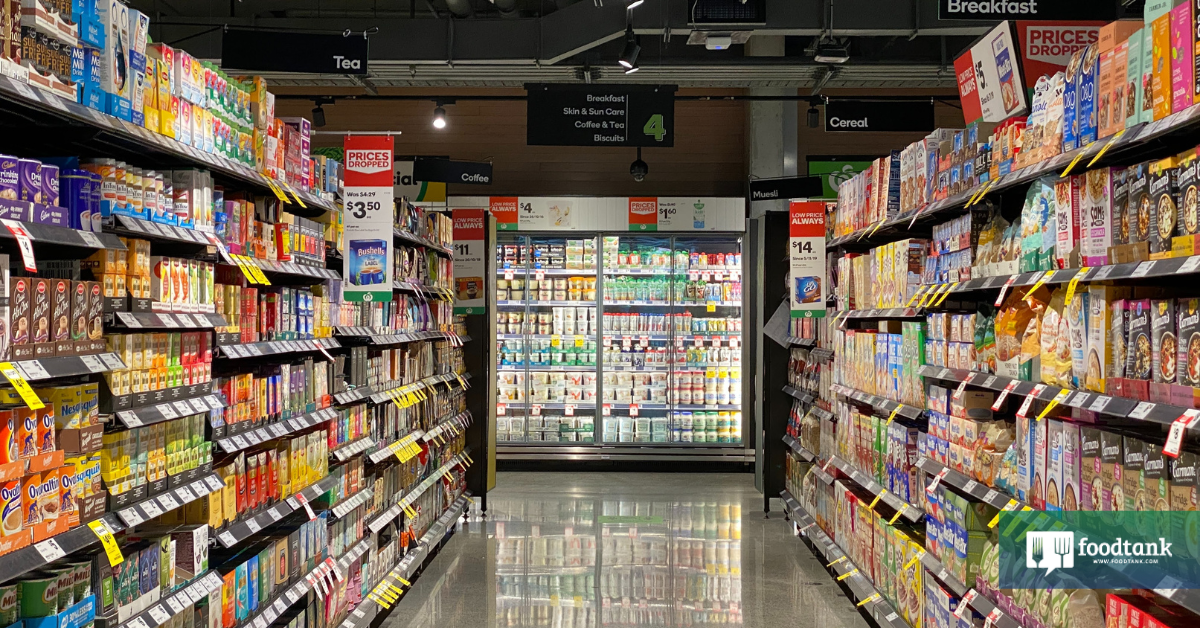
This is the second part in a series about the work of the U.S. Food and Drug Administration. Read parts one and three.
As part of the U.S. Food and Drug Administration’s (FDA) prioritization of its nutrition initiatives, the agency is exploring development of a standardized FOP scheme for food packages that could help consumers quickly and easily identify healthier food options. FDA’s work on FOP labeling supports the White House’s National Strategy on Hunger, Nutrition, and Health and its objectives to end hunger and increase healthy eating and physical activity by 2030.
“There is no single solution to reducing diet-related disease,” Robin McKinnon, Senior Advisor for Nutrition Policy at the FDA’s Center for Food Safety and Applied Nutrition, tells Food Tank. “But with the National Strategy, you see agencies across the federal government committed to taking action using the unique levers and authorities of each agency to improve public health.”
According to McKinnon, FOP labeling can complement the Nutrition Facts label on packaged foods by giving consumers additional context to help them identify healthier food options. A standardized, science-based FOP scheme could provide additional information to help consumers identify foods that can help them build a healthy eating pattern.
“The goal really is to make it easier for consumers to identify healthier options for themselves and their families. FOP labeling is a fast and simple tool that can assist busy consumers, including those with lower nutrition knowledge, in identifying healthier foods.” McKinnon says.
The FDA first announced their plans to conduct a quantitative research study for FOP labeling in a 60-day procedural notice on January 25, 2023. This announcement, in alignment with the Paperwork Reduction Act, provided an opportunity for stakeholders and the general public to comment on the experimental study. On June 15, 2023, the FDA issued a 30-day procedural notice, which incorporated input received on the 60-day notice, and provided information about the study’s design as well as the specific schemes to be tested.
“We have developed FOP schemes that we’re now testing in our consumer research. These schemes are based on, for example, our comprehensive review of the literature, insights from FOP focus groups we conducted, and a review of schemes from other countries,” McKinnon tells Food Tank.
FDA’s Front of Package Labeling Literature Review found, among other things, that an FOP labeling scheme can help consumers identify healthier foods, especially those with lower nutrition knowledge. The literature review also revealed that consumers have a preference for simpler, interpretive FOP labels, and that these FOP schemes complement the Nutrition Facts label.
McKinnon says the focus groups, literature review, and review of FOP schemes from other countries helped provide a base for their ongoing research to develop an FOP scheme and make nutrition information more accessible to consumers.
“That’s where we’re aiming, to be able to help provide consumers the assistance we know they’re looking for,” McKinnon says. “People want to eat healthier for the most part, and they want the information to help them do that.”
Articles like the one you just read are made possible through the generosity of Food Tank members. Can we please count on you to be part of our growing movement? Become a member today by clicking here.
Photo Courtesy of Franki Chamaki, Unsplash
